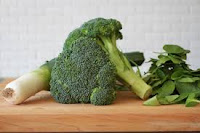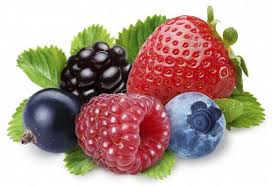14 foods that decrease the risk of heart attack
Our
heart is one of the most important organs but surprisingly we take care of it
the least, loading it every day with stress and unhealthy diets and that's too
bad because fatty food increases cholesterol levels which leads to vascular
plaques that prevent the heart from working correctly. So do you want to clean
your blood vessels? Are you ready to improve your overall well-being? What
about decreasing the risk of heart attacks in the future?
Here we go...
1- Fatty fish:
Salmon,
mackerel, herring, haddock and other fatty fish decreases the risk of arrhythmia
and atherosclerosis. They also contain lots of vitamins as well as minerals. Vitamins
B 2 and D together with riboflavin help the bones to absorb calcium. Other minerals contained in fish are iron
zinc and selenium; they boost our health and fight heart diseases. So fish can
make a very healthy, tasty and nutritious meal. It's best to eat it two to
three times a week.
2- Oatmeal:
Consumption
of oatmeal dates back to 7,000 BC. Exactly oats where the cereals humans
cultivated first.Ancient Chinese enjoyed this food and ancient Greeks invented porridge.
More than 75% of the Americans eat oatmeal for breakfast and this fact is
really good. Rich in fiber, porridge decreases the levels of bad cholesterol
and improves digestion. Coarse oatmeal is the healthiest.
3- Berries:
Blueberries
and strawberries are very good at lowering blood pressure and dilating blood vessels.
Strawberry lovers also get fiber, folate, antioxidants and potassium from their
favorite berries. These red berries are full to the brim with vitamin C and
they contain more than oranges. In all this goodness is very low in calories or
sugar. As for blueberries, Native Americans use these berries for medicinal
purposes. For example, treating bad coughs, improving the vision and containing
vitamins C and E. Blueberries are the second most popular berries in the USA.
4-Dark-chocolate:
Minimum
of 60 to 70% cocoa. Such type of chocolate helps to normalize blood pressure
and fight inflammation and blood clotting. What is more, it provides the anti-stress
effect as it increases the production of serotonin which is known for its
calming effects. Cocoa, the main component of dark chocolate also helps to
prevent memory decline. Another reason to eat chocolate regularly is the fact
that it is in fact good for your skin and protects it from ultraviolet rays.
5-Nuts:
Nuts
contain protein fibers that are useful for the heart. They also have vitamin E as
their ingredient, which helps to decrease the levels of bad cholesterol. Ancient
Greeks were known to believe that hazelnuts could cure a cough and baldness.
Almonds
are so rich in vitamin E that they can be stored in a refrigerator for as long
as two years. Chestnuts contain a lot of vitamin C, about 20% of their weight.
But if you have a dog don't give it macadamia nuts, they are poisonous to these
animals.
6-Extra virgin olive oil:
Just a couple of spoons
a day will lower the bad cholesterol levels and sugar in your blood. Olive oil
is very high in oleic acid, which reduces blood pressure. It is interesting
that when the olives are crashed, oil leaves them naturally, therefore
beneficial ingredients and vitamins are not harmed by chemicals or preservatives.
People also believe that this oil has an effect of protection from several
types of cancers such as breast, digestive tract, and prostate.
7-Green tea:
Bioactive compounds contained
in this drink improve health antioxidants and it have strong medicinal
properties. Green tea makes the brain function better. It has a positive influence
on the process of fat-burning boosting the rate of metabolism.
This drink may
decrease the risk of different types of cancer such as prostate and breast
cancer. It lowers the risk of developing Alzheimer's and Parkinson's diseases.
Just one cup a day stops the formation of cholesterol plaques.
8-Broccoli and spinach:
 These products contain
lots of vitamins, minerals and antioxidants. They activate the heart and
normalize blood pressure. They are also rich in fiber. Broccoli in particular
has a lot of medicinal benefits, such as prevention of some kinds of cancer, digestive
system improvement and detoxification of the body. It also resembles a vitamin
injection, filling you with numerous vitamins and minerals. Skin protection,
vision improvement and allergic reactions. Spinach in turn contains manganese,
potassium, magnesium, iron and calcium. Other things like vitamins A, vitamin,
vitamin C, vitamin b6 and others. It improves eyesight, keeps blood pressure
stable, and even makes your muscles stronger.
These products contain
lots of vitamins, minerals and antioxidants. They activate the heart and
normalize blood pressure. They are also rich in fiber. Broccoli in particular
has a lot of medicinal benefits, such as prevention of some kinds of cancer, digestive
system improvement and detoxification of the body. It also resembles a vitamin
injection, filling you with numerous vitamins and minerals. Skin protection,
vision improvement and allergic reactions. Spinach in turn contains manganese,
potassium, magnesium, iron and calcium. Other things like vitamins A, vitamin,
vitamin C, vitamin b6 and others. It improves eyesight, keeps blood pressure
stable, and even makes your muscles stronger.
9-Avocado:
This incredibly
nutritious fruit, yes it is a fruit, decreases the bad cholesterol levels and
helps clear the arteries. It is rich in healthy fats also. It contains a long
list of vitamins including vitamin C, b5, b6 vitamin E, and K folate and others.
Avocados are packed with fiber, which can be useful for weight loss, blood
sugar reduction and other health benefiting processes
10-Pomegranate:
Pomegranates contain
antioxidants, lower blood pressure, normalized blood circulation and increased
hemoglobin levels. Surprisingly, pomegranates also have certain antibacterial
properties which can help you to reduce dental plaque and fight away different
oral diseases.
11-Cinnamon:
This spice can protect
you from heart diseases and atherosclerosis. It also boosts metabolism and it
helps you to lose weight. It is full of antioxidants, winning in the
competition of 26 spices antioxidant activity, leaving even garlic behind. It
has a strong effect against diabetes lowering blood sugar.
12-watermelon:
This berry plays an
important role in vascular health. It stabilizes the cholesterol levels and
contains antioxidants. It provides hydration which is a great thing for your
body. It has certain benefits for the health of skin and hair and if you are
keen on intensive workouts drink watermelon juice before the training, you will
be surprised to feel much less muscle soreness the next day.
13-Garlic:
Darlic dilates the
vessels, lowers blood pressure, alleviates vasoconstriction and prevents
atherosclerotic plaques from appearing. It improves digestion as well assisting
in the functioning of the intestines. Being rich in selenium, vitamin C and
quercetin, it helps your eyes, protecting them from infection and swelling.
What
is more, it is frequently used to cure ear aches and finally it is a well-known
fact that to survive a cold with minimal discomfort you need to eat garlic.
14: Apples and Pears:
These fruits are rich in
fiber that helps your heart they normalize blood circulation and are cheaper
and more readily available alternatives to pomegranates. Apples will help to
maintain white and healthy teeth.
When you bite into an apple, saliva is
produced which reduces the decay of your teeth and lowers the level of bacteria.
They boost your immune system prevent osteoporosis take care of the health of your
digestive system and increase your energy.
 How to
stop procrastinating? This is a great
solution to overcome laziness and achieve anything you wish. This method takes
less than a minute and results are quite impressive. The technique is called Kaizen
or the 1-minute principle. Kaizen originated in Japan and it is something that
anyone can attempt in any sphere of their life.
In Japan, for instance, it's often applied to improve management techniques.
The word itself contains two routes, “KAI” (change) and “ZEN” (wisdom).
How to
stop procrastinating? This is a great
solution to overcome laziness and achieve anything you wish. This method takes
less than a minute and results are quite impressive. The technique is called Kaizen
or the 1-minute principle. Kaizen originated in Japan and it is something that
anyone can attempt in any sphere of their life.
In Japan, for instance, it's often applied to improve management techniques.
The word itself contains two routes, “KAI” (change) and “ZEN” (wisdom). 














